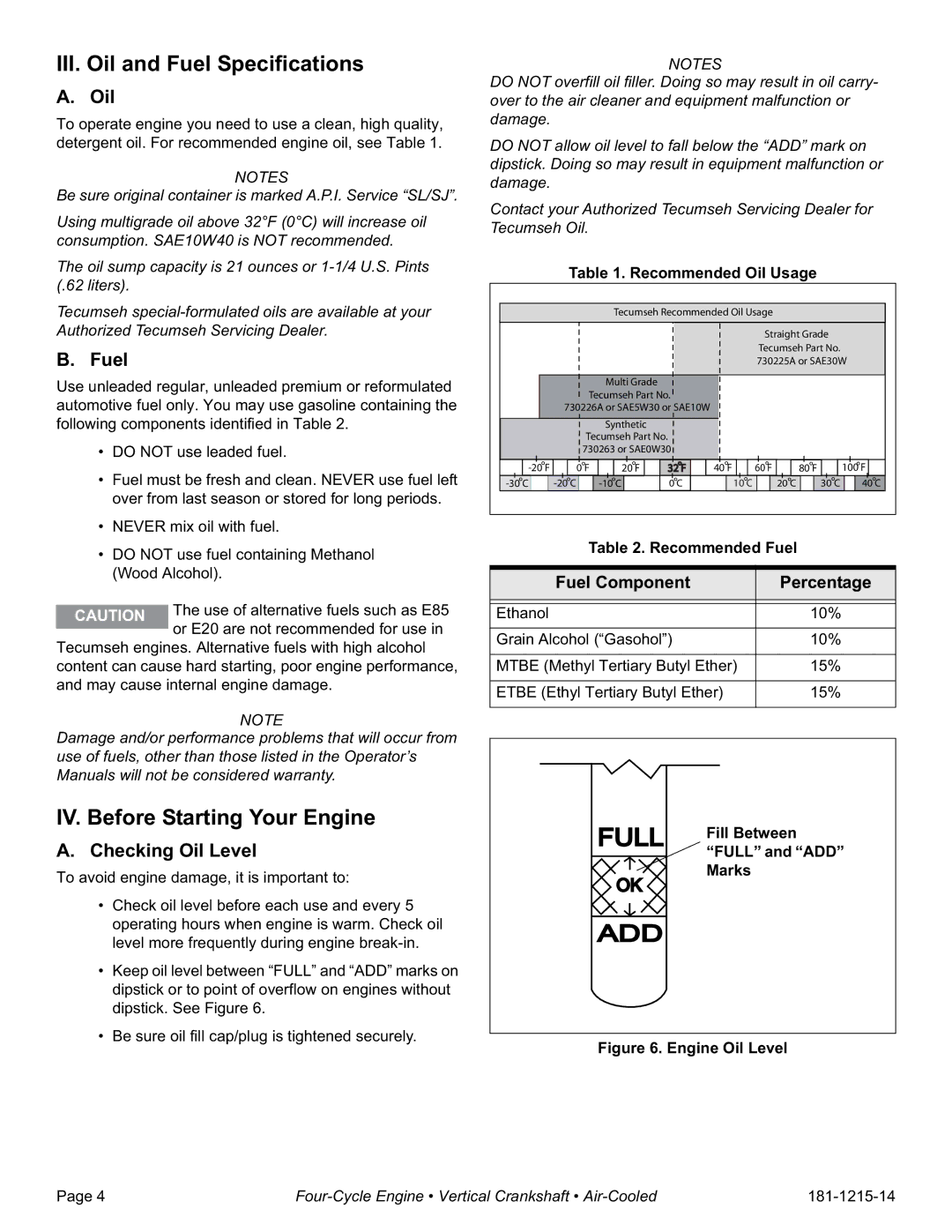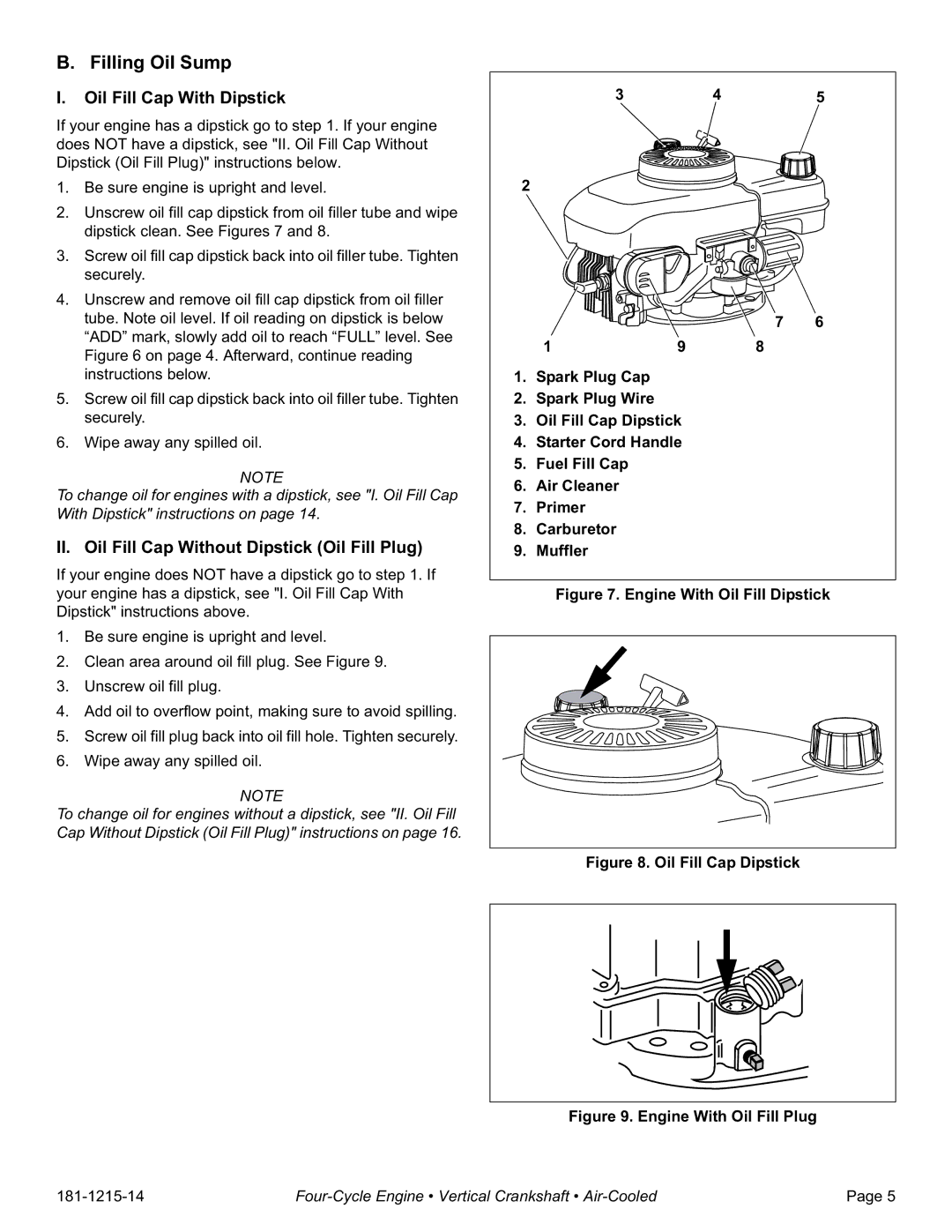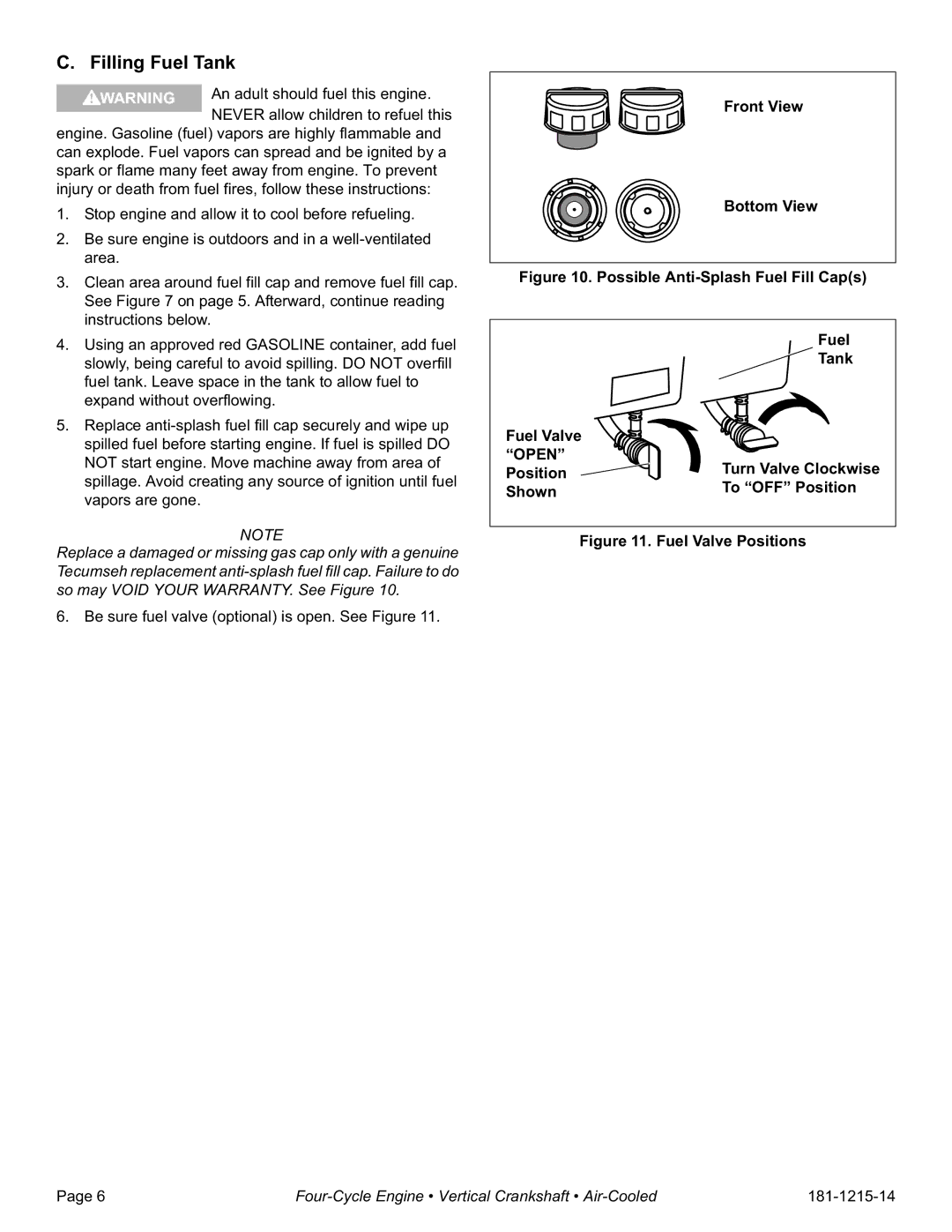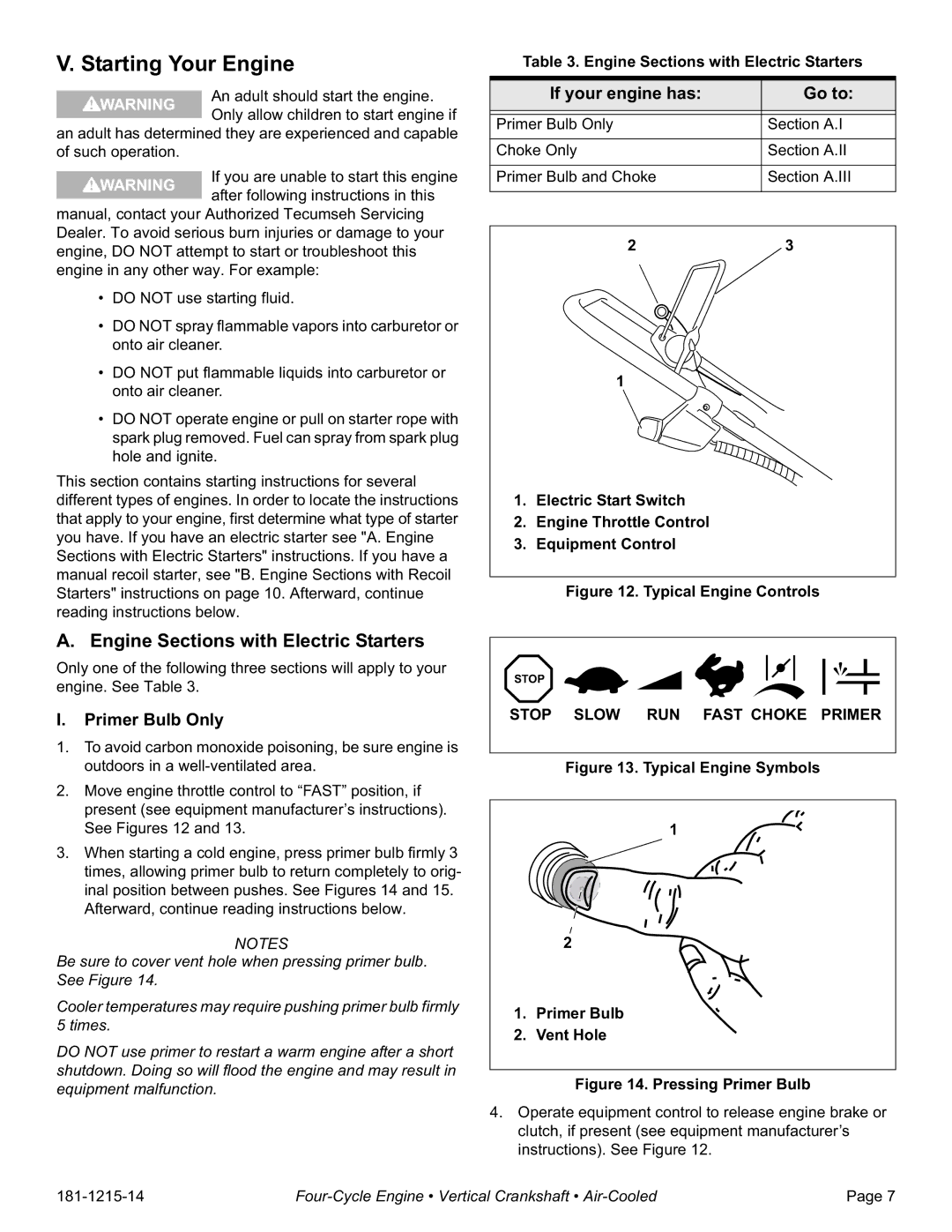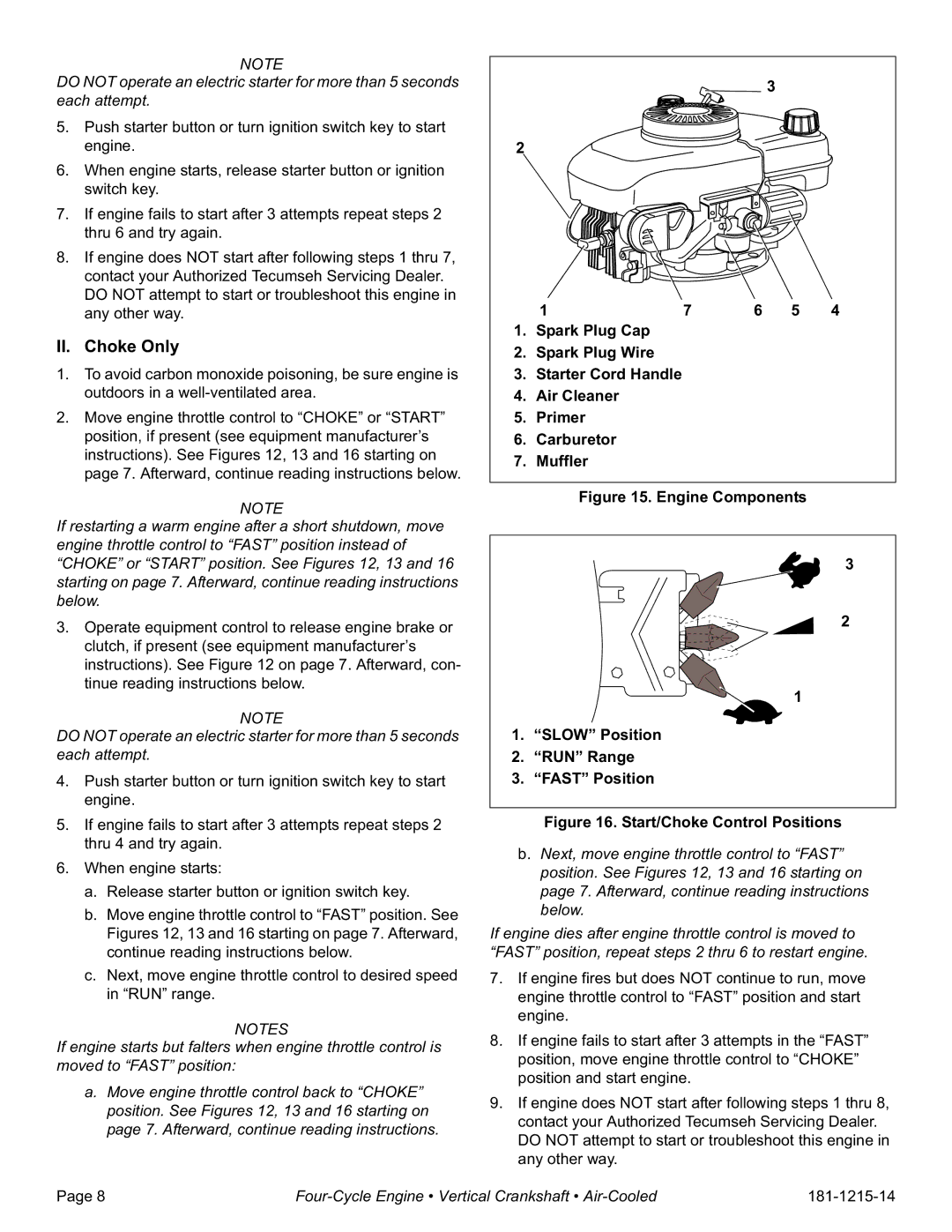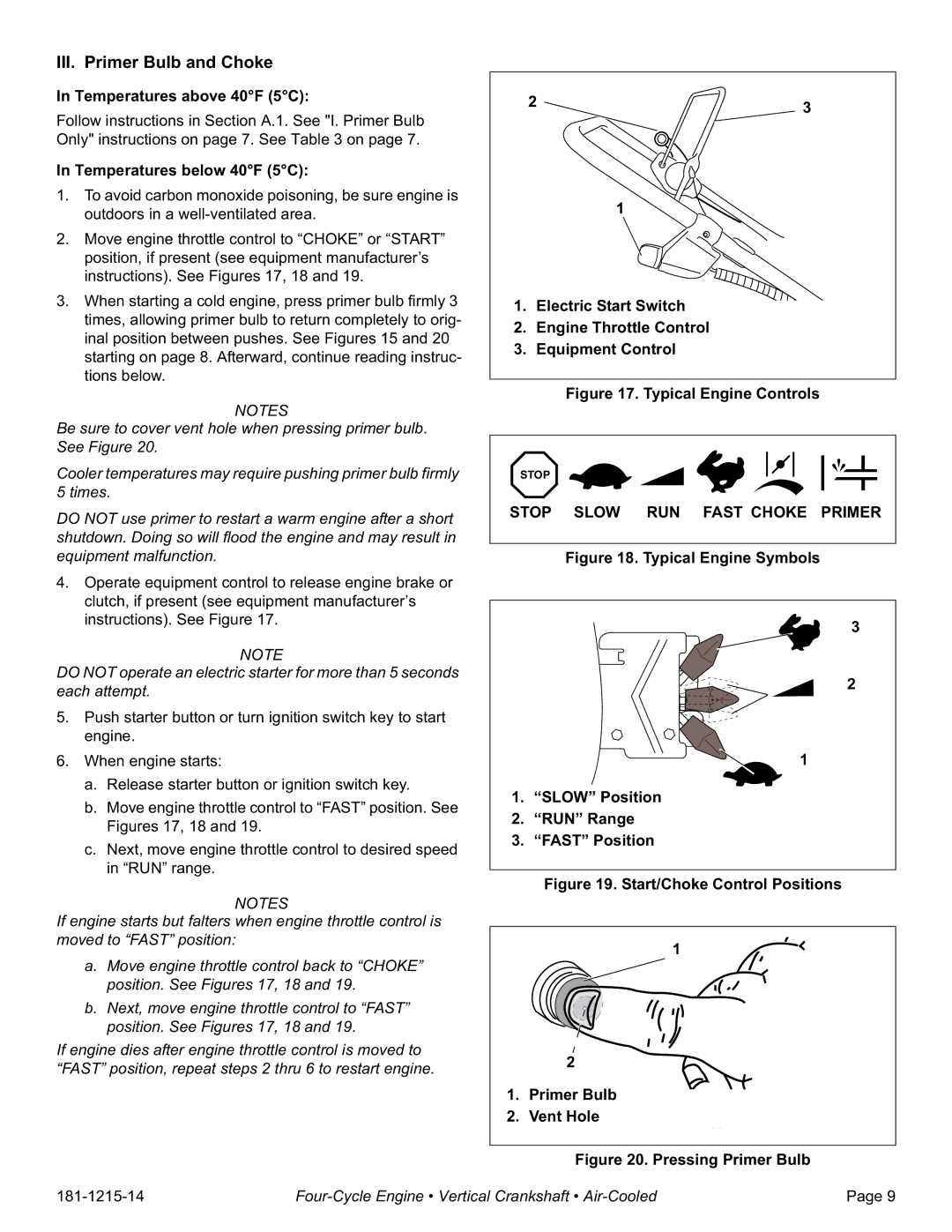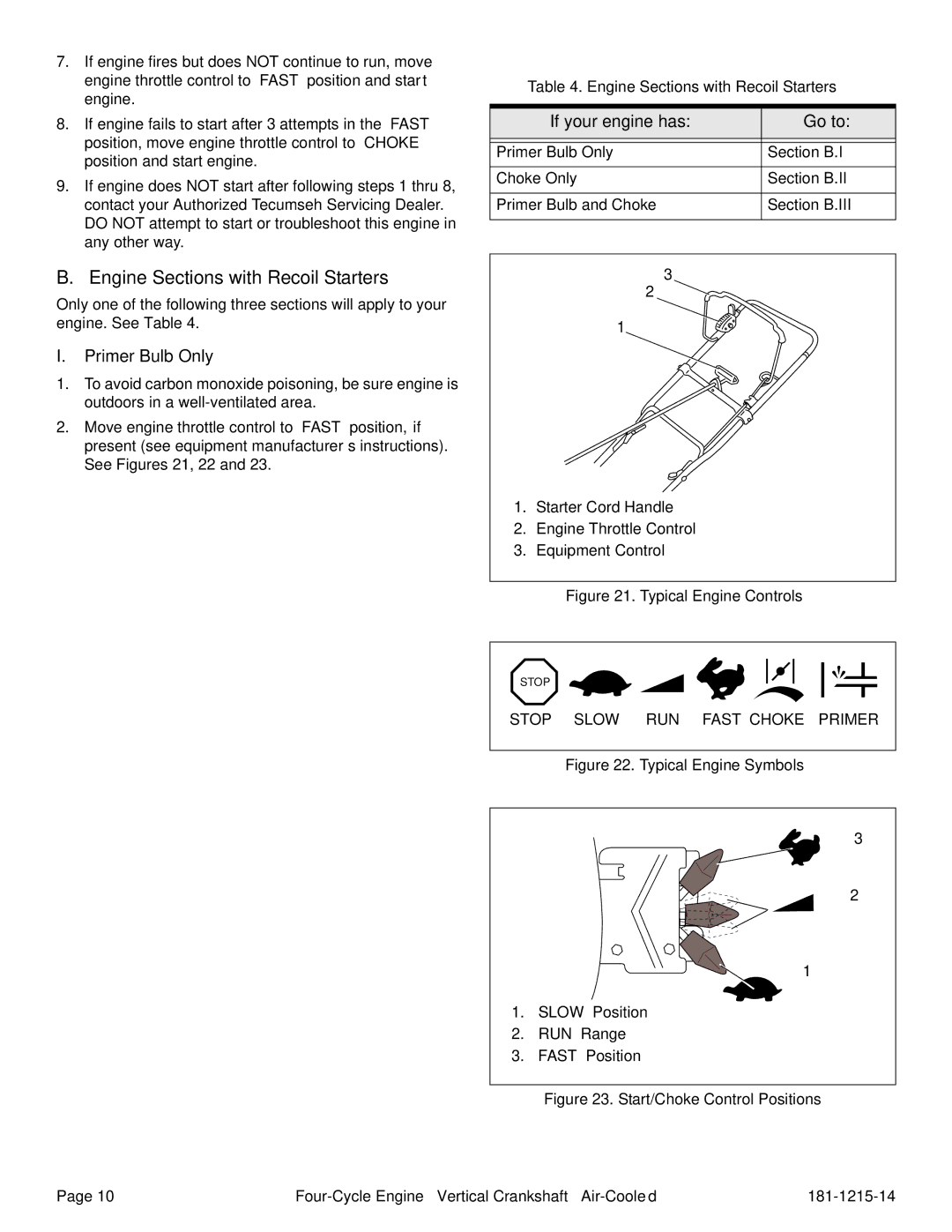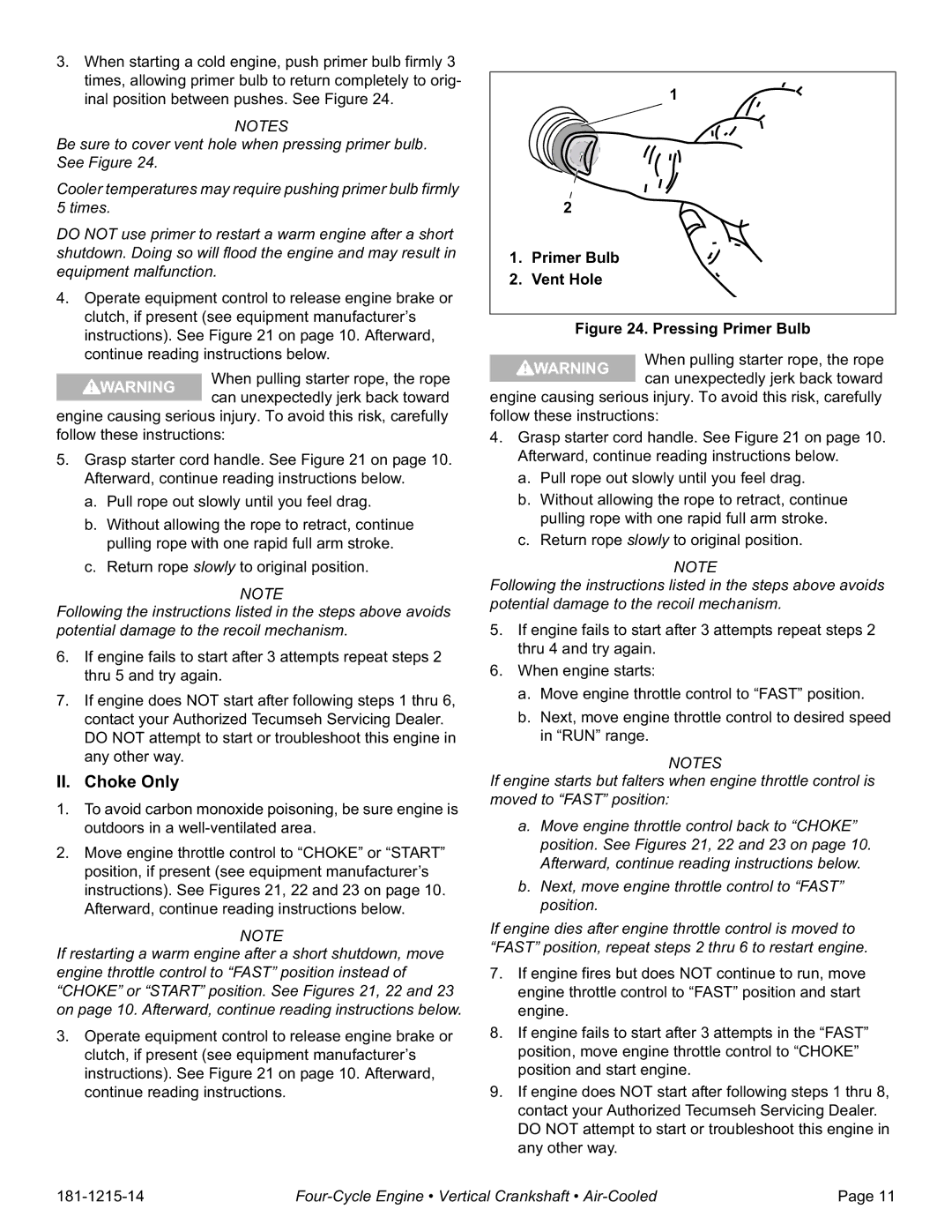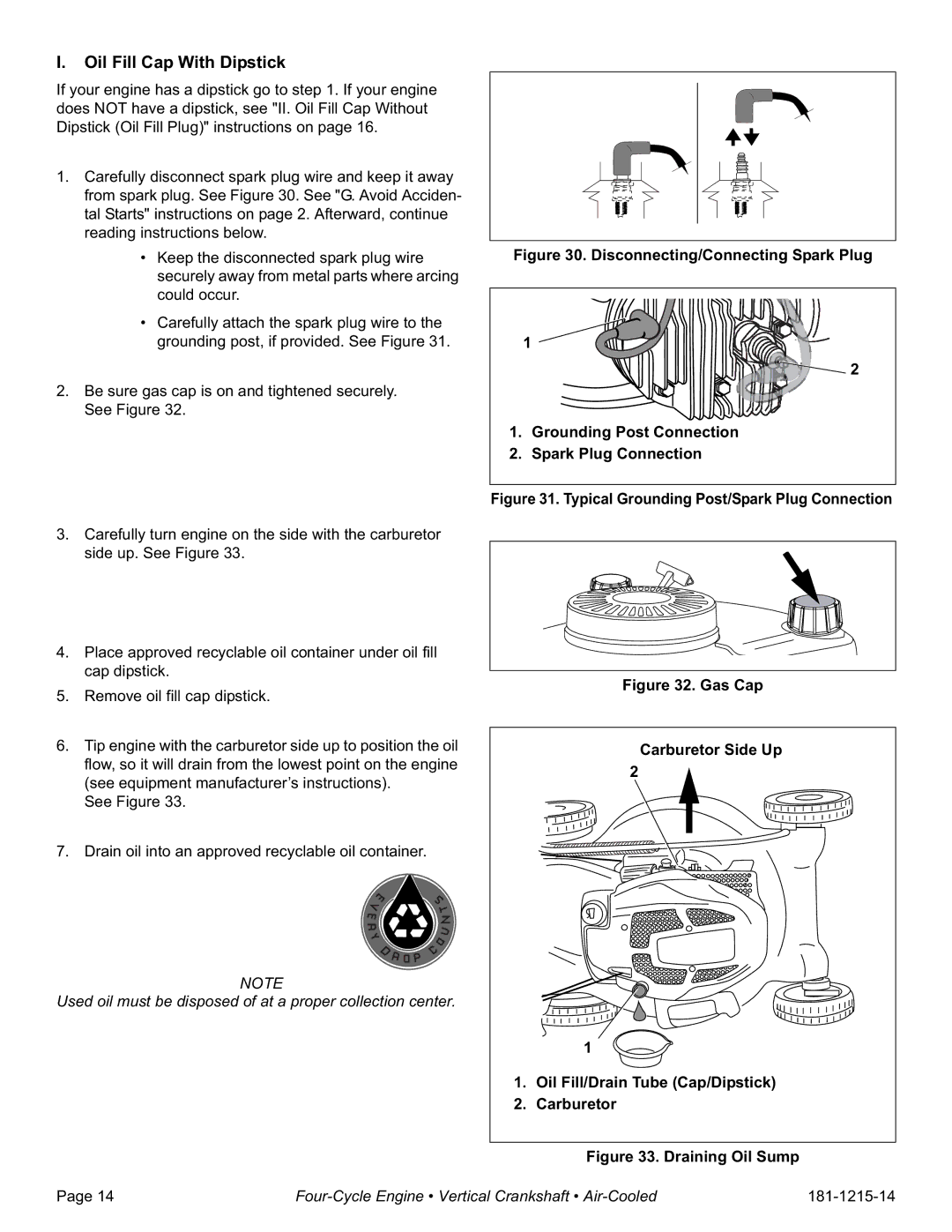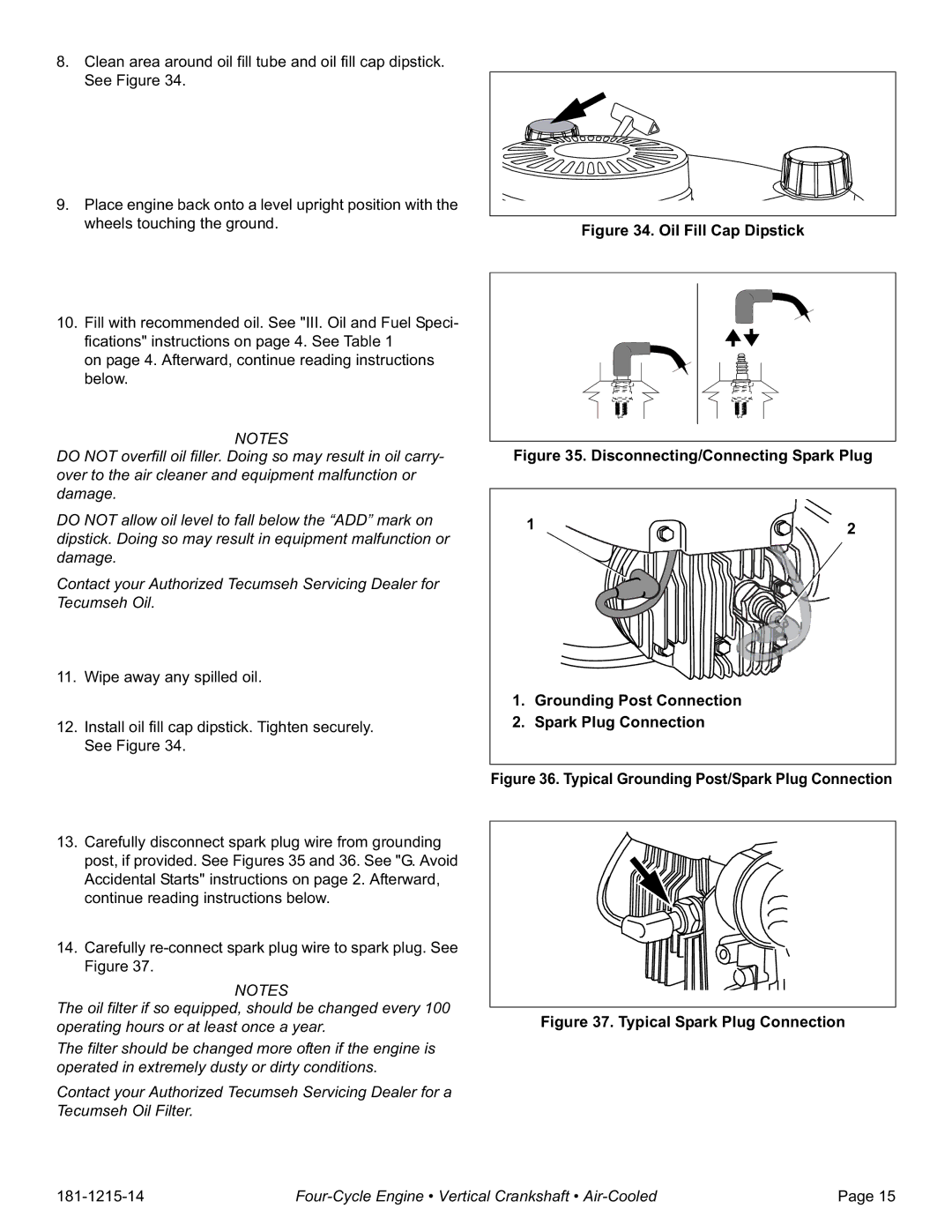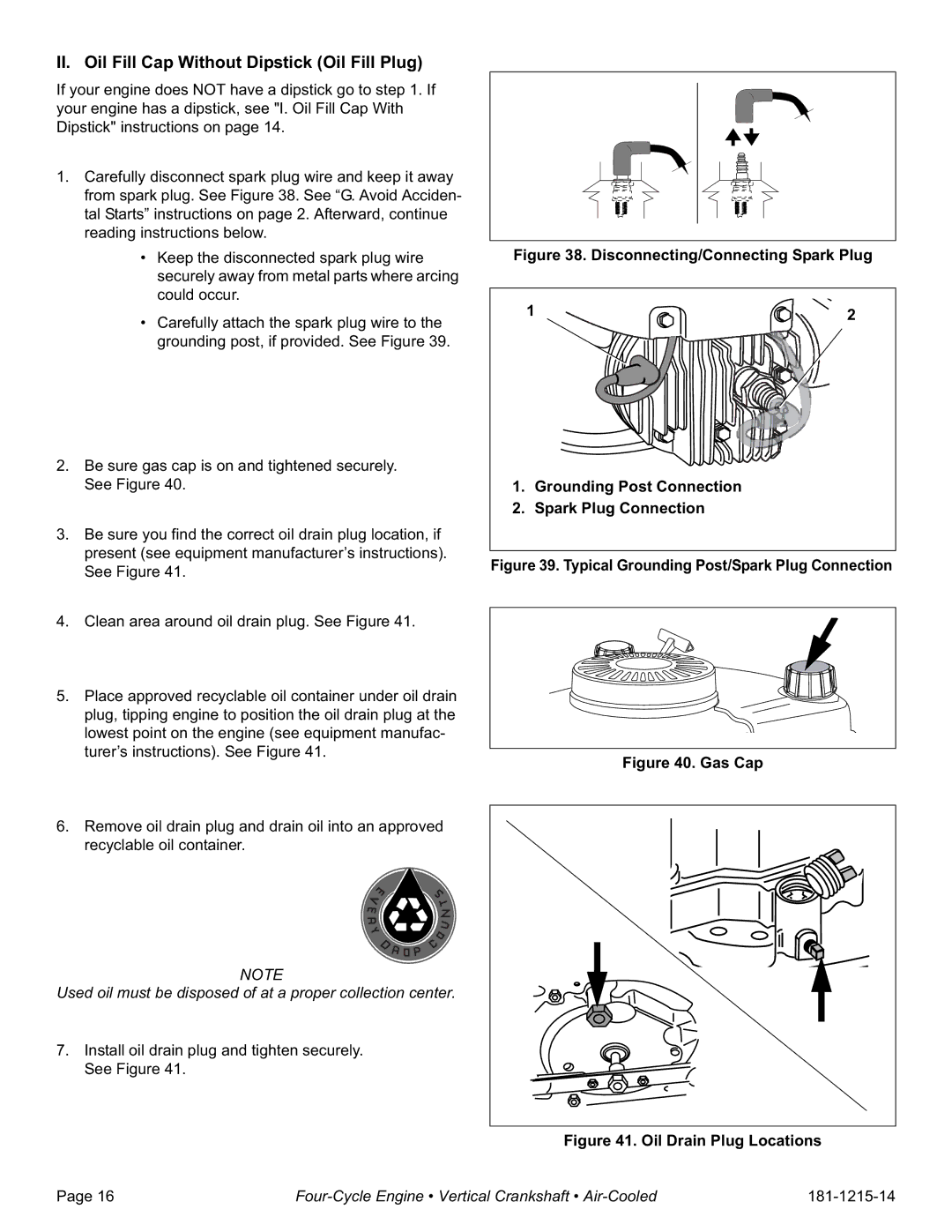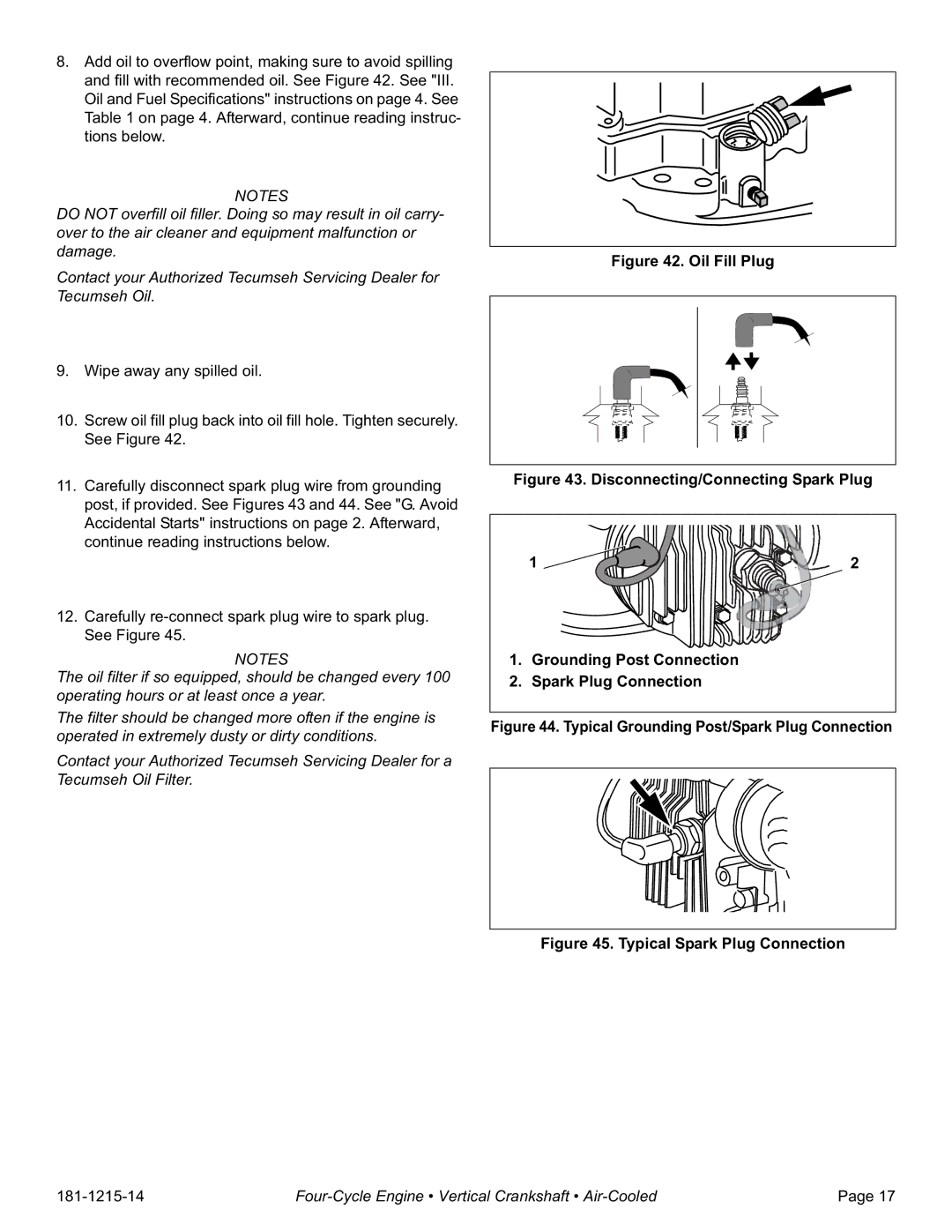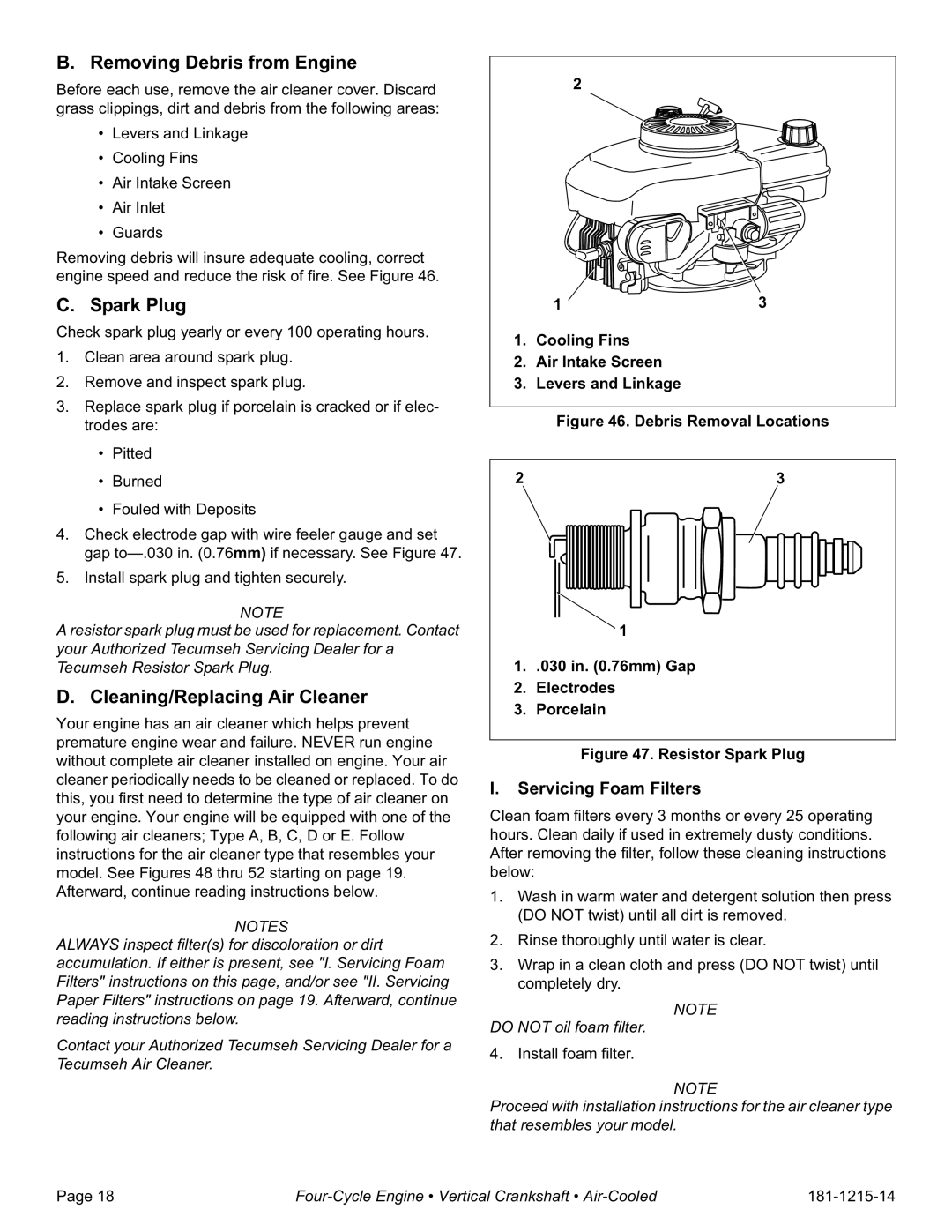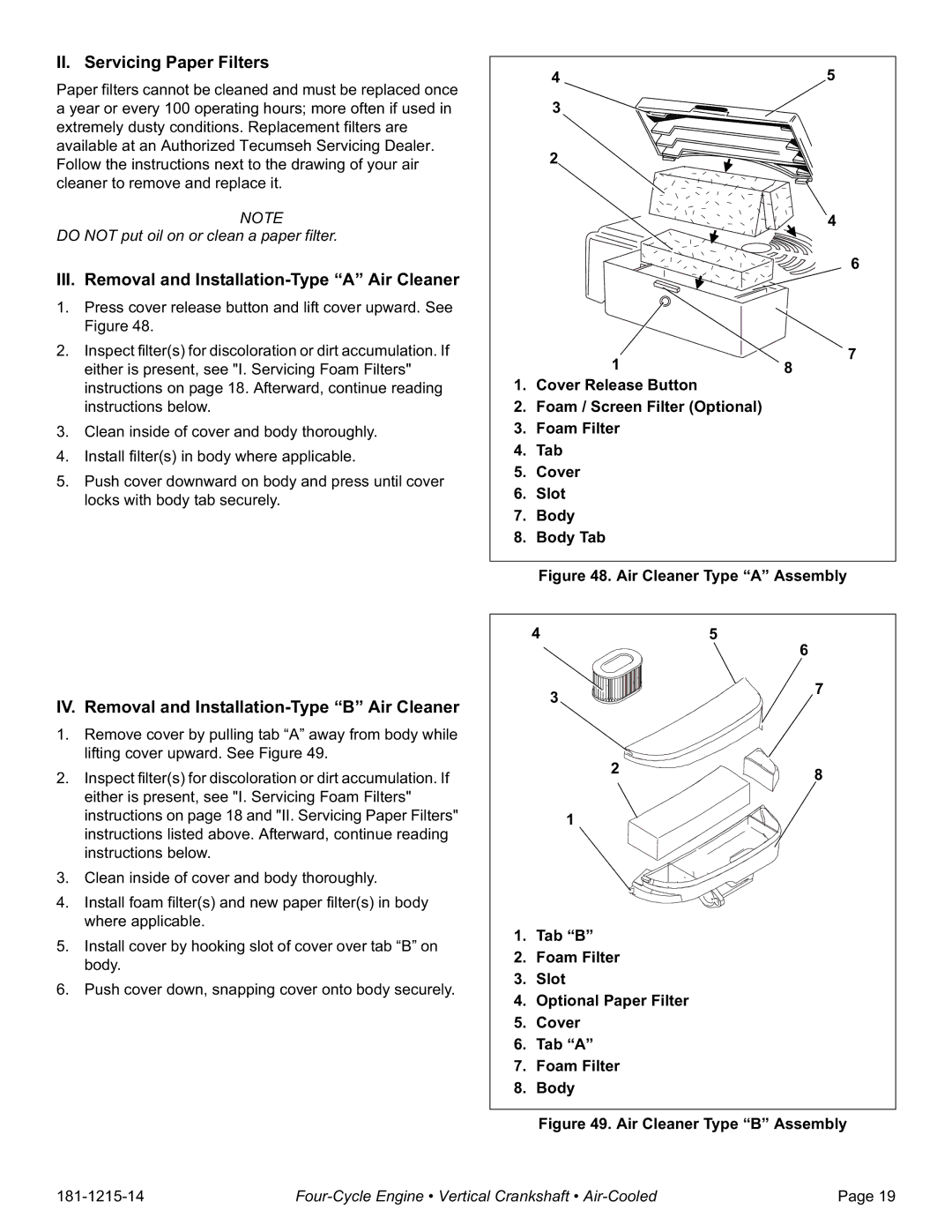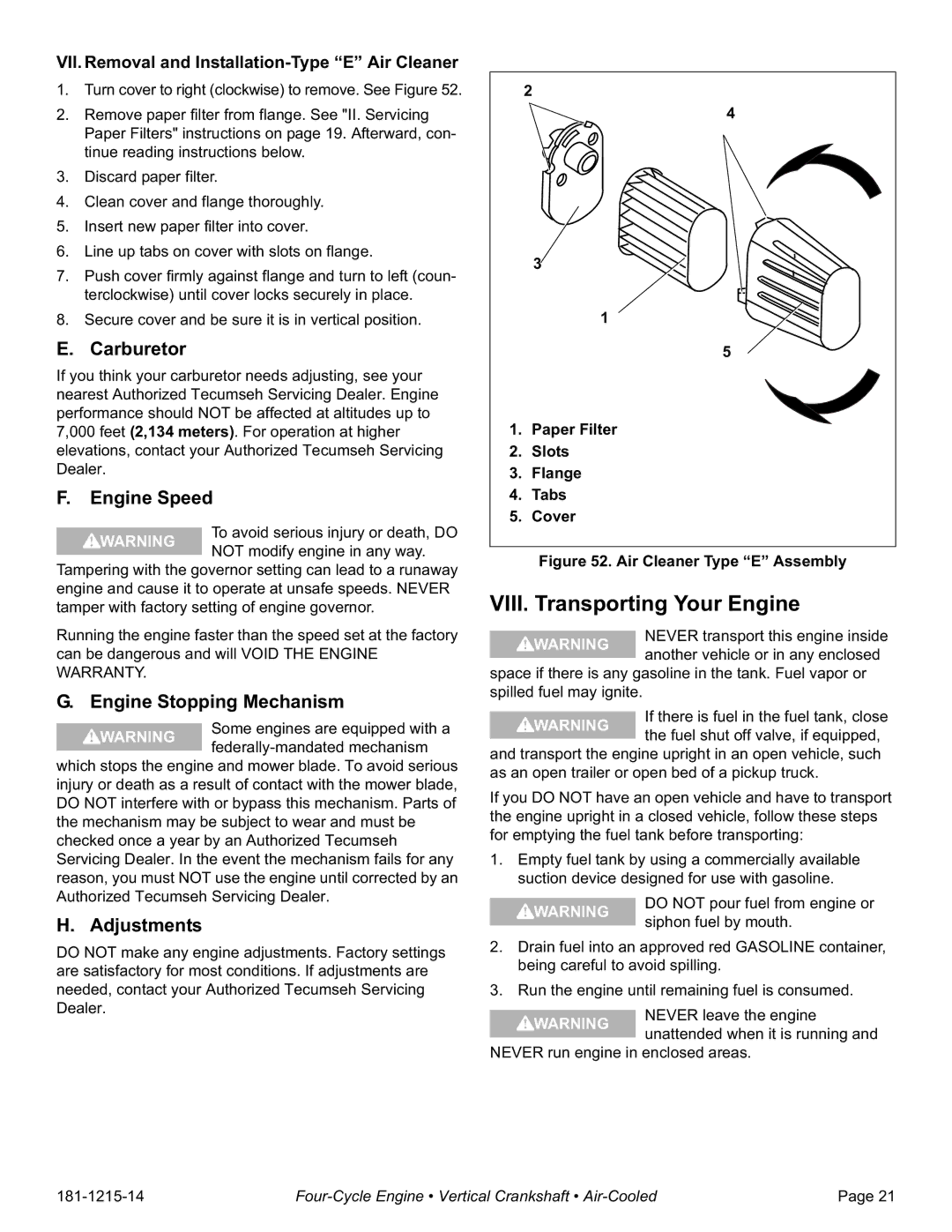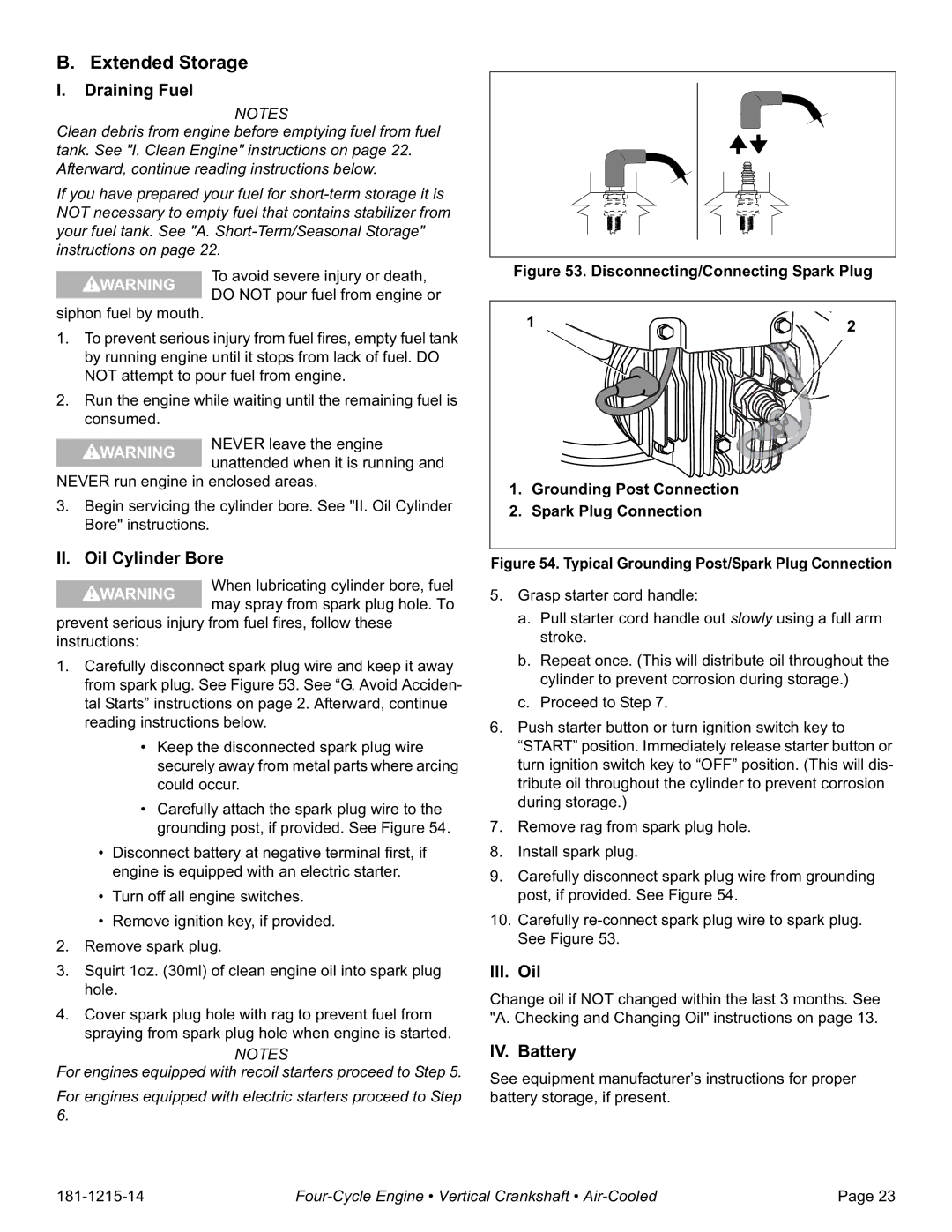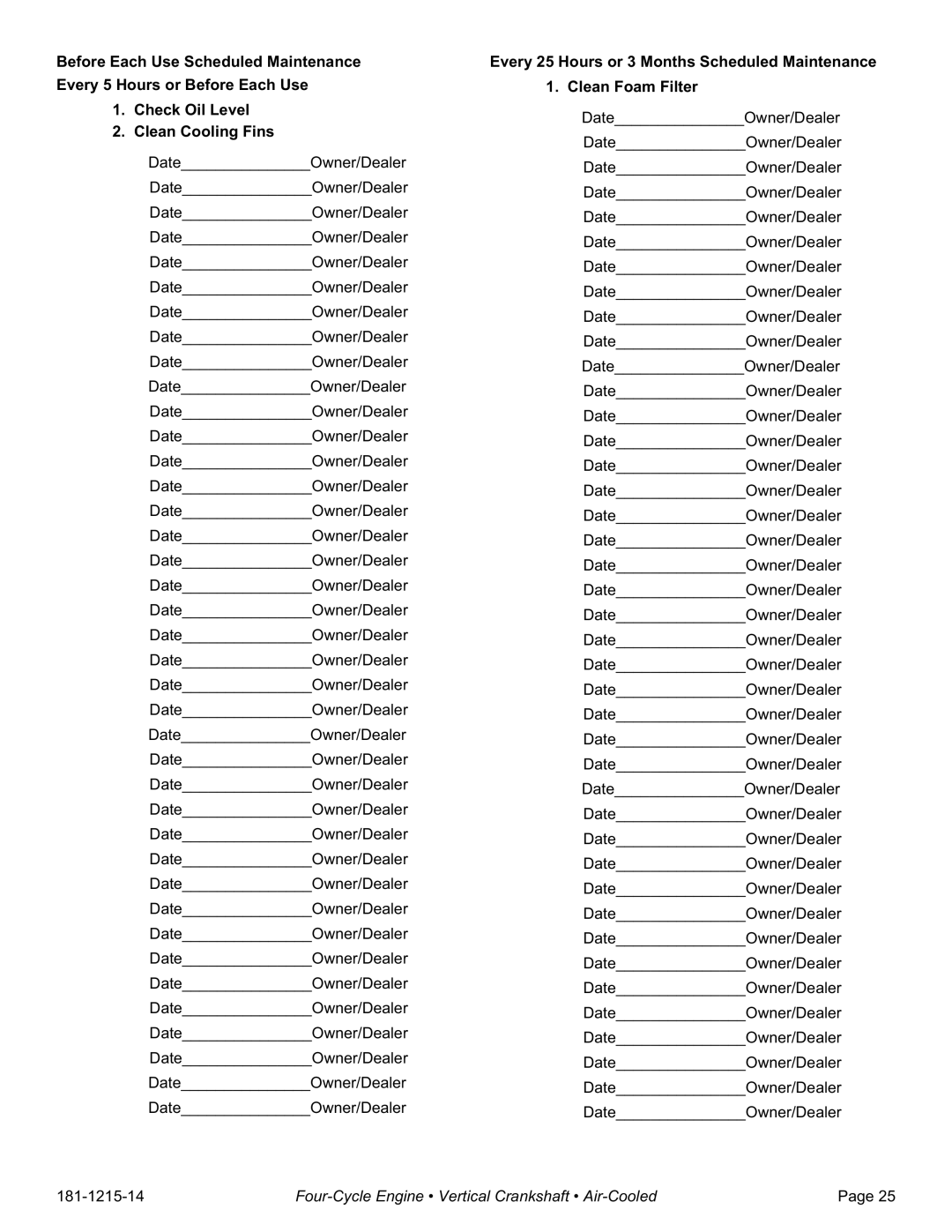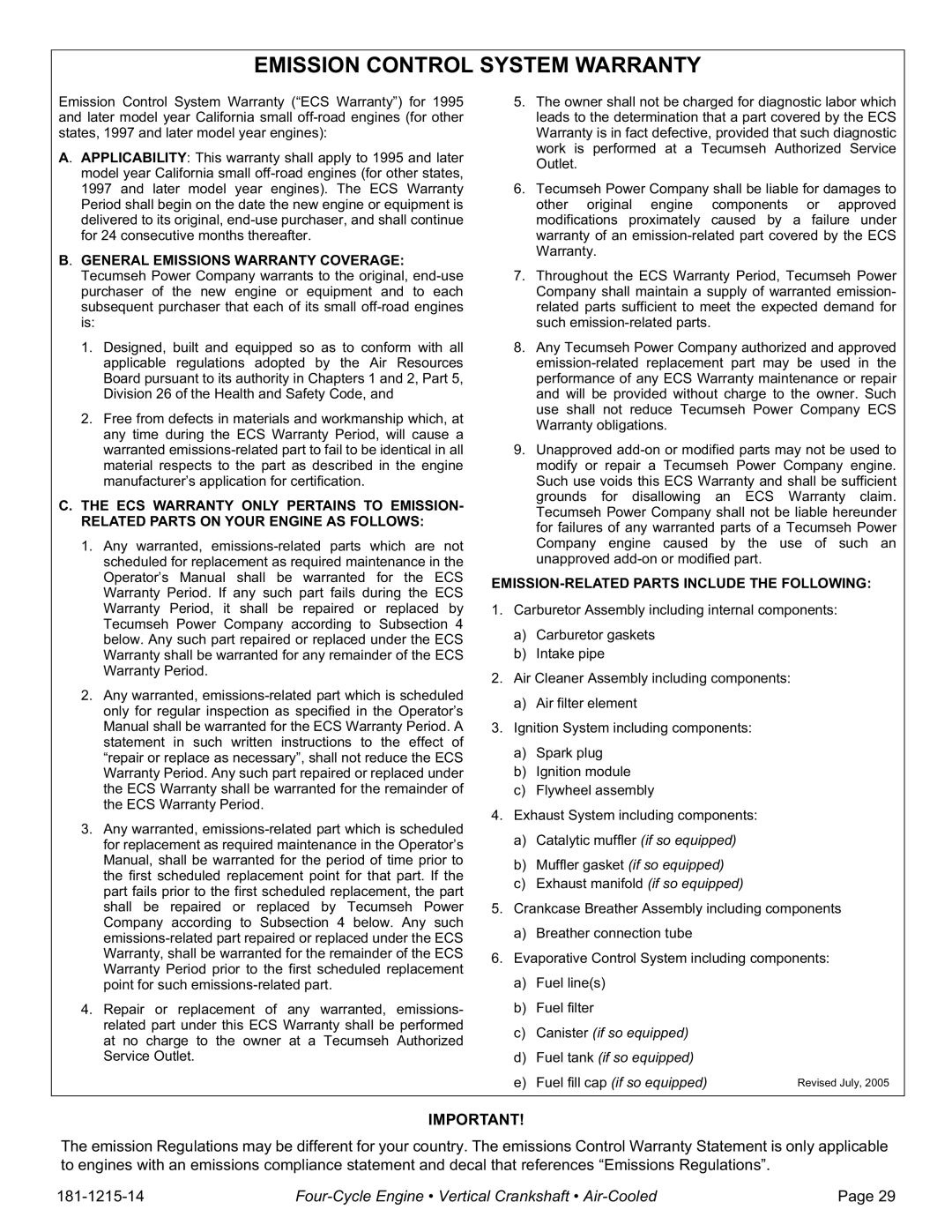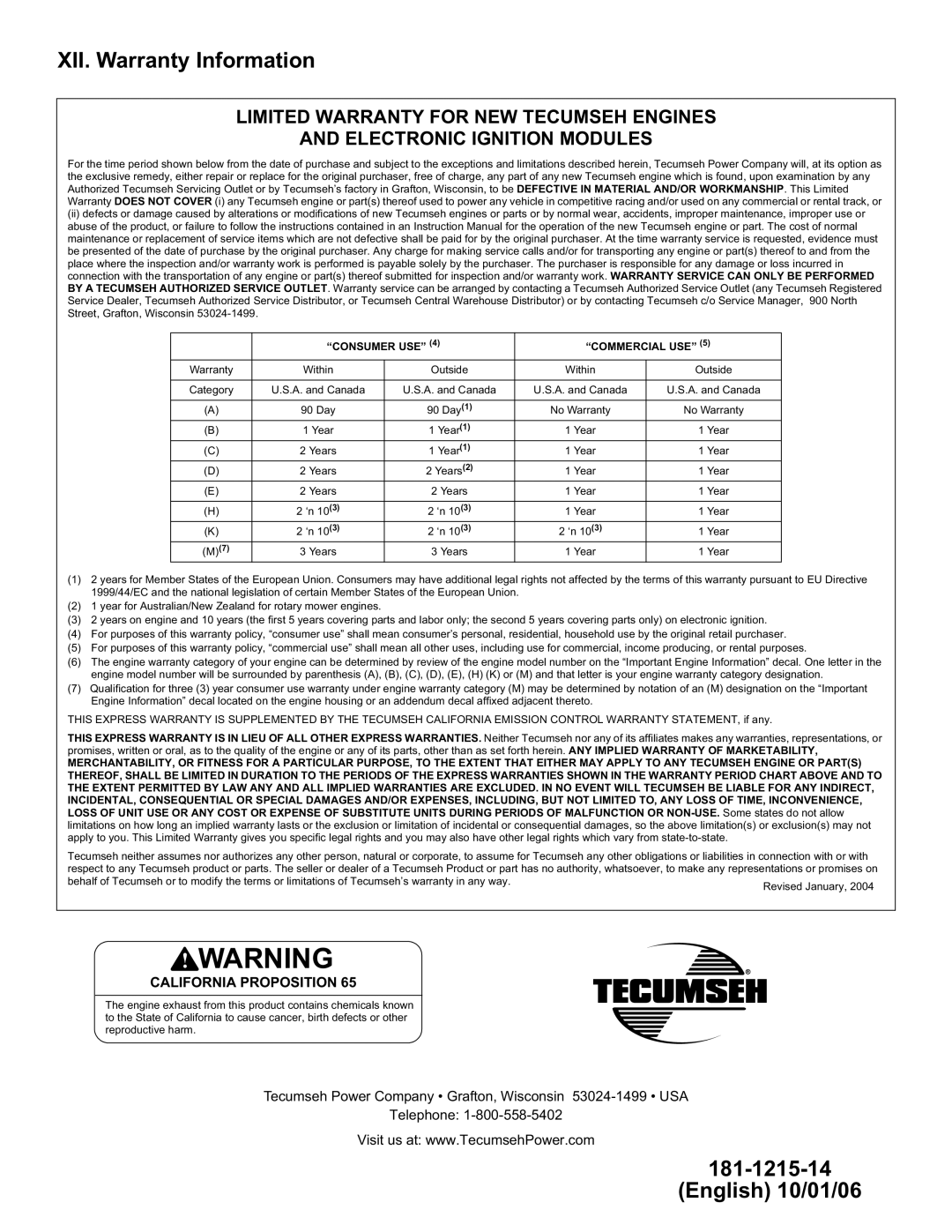
II. Oil Fill Cap Without Dipstick (Oil Fill Plug)
If your engine does NOT have a dipstick go to step 1. If your engine has a dipstick, see "I. Oil Fill Cap With Dipstick" instructions on page 14.
1.Carefully disconnect spark plug wire and keep it away from spark plug. See Figure 38. See “G. Avoid Acciden- tal Starts” instructions on page 2. Afterward, continue reading instructions below.
•Keep the disconnected spark plug wire securely away from metal parts where arcing could occur.
•Carefully attach the spark plug wire to the grounding post, if provided. See Figure 39.
2.Be sure gas cap is on and tightened securely. See Figure 40.
3.Be sure you find the correct oil drain plug location, if present (see equipment manufacturer’s instructions). See Figure 41.
4.Clean area around oil drain plug. See Figure 41.
5.Place approved recyclable oil container under oil drain plug, tipping engine to position the oil drain plug at the lowest point on the engine (see equipment manufac- turer’s instructions). See Figure 41.
6.Remove oil drain plug and drain oil into an approved recyclable oil container.
NOTE
Used oil must be disposed of at a proper collection center.
7.Install oil drain plug and tighten securely. See Figure 41.
Figure 38. Disconnecting/Connecting Spark Plug
1 | 2 |
|
1.Grounding Post Connection
2.Spark Plug Connection
Figure 39. Typical Grounding Post/Spark Plug Connection
Figure 40. Gas Cap
Figure 41. Oil Drain Plug Locations
Page 16 |
